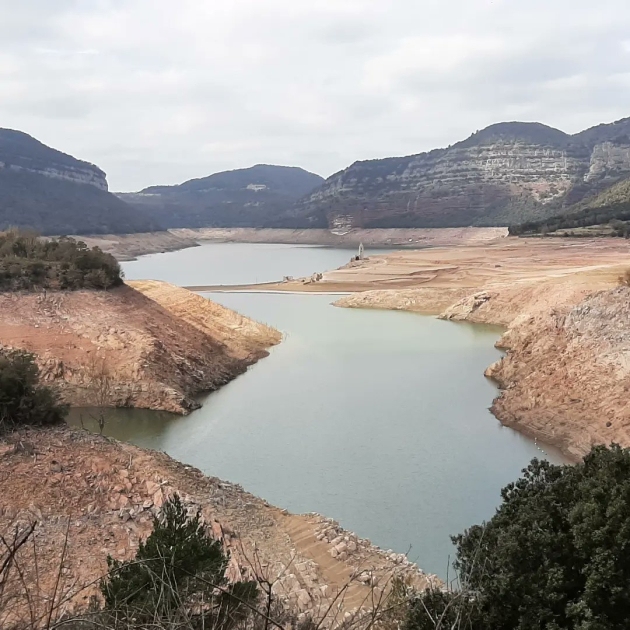The Catalan government has declared 'Exceptional' drought status for 23 municipalities in the Pyrenean regions of Berguedà, Solsonès and Ripollès that depend on the headwaters of the Llobregat river. The director of the Catalan Water Agency (ACA), Samuel Reyes, has announced this today after a new meeting of the Interdepartmental Drought Committee. Thus, the block of these 23 municipalities rises from 'Alert' (level 3 out of 5) to 'Exceptional' (level 4 out of 5) status. The measure will come into force as soon as the resolution is published in the Catalan official gazette, scheduled for next week.
Specifically, the municipalities in the north of the Llobregat river that are affected by this measure are: Bagà, Borredà, Capolat, Castell de l'Areny, Castellar de n'Hug, Castellar del Riu, Cercs, Fígols, Gisclareny, Gombrèn, Gósol, Guardiola de Berguedà, Guixers, la Coma i la Pedra, la Nou de Berguedà, la Pobla de Lillet, les Llosses, Saldes, Sant Jaume de Frontanyà, Sant Julià de Cerdanyola, Sant Llorenç de Morunys, Vallcebre i Vilada.
Vallirana enters emergency status at its own request
The drought committee has also decided that the municipality of Vallirana, about 10 kilometres west of Barcelona city in the Serra d'Ordal, should, at the request of the local council, be raised to 'Emergency' (level 5 out of 5) status due to the depletion of its own resources. The remaining units of Catalonia's internal catchment basins continue in the same situation as before, and thus, when the information is updated in the gazette, two zones will be Normal (level 1), two zones in Alert (level 3), 11 in Exceptional (level 4) and three in Emergency (level 5).
The fact is that at present there are only 135 municipalities in the internal Catalan basins that are not in Emergency or Exceptional status. These fall within the catchment of the Ebro river, which depend on the Ebro Hydrographic Confederation, the water authority that covers the whole basin for Spain's longest river. The exceptional status brings with it restrictions on agricultural, industrial and urban irrigation. The average allowance per inhabitant per day is also reduced, from 250 litres per person per day to 230 litres.
Reyes explained that reservoirs are currently at just 19% of their capacity and that Catalonia has been in drought for 36 months, while during the serious drought event in 2008, this lasted for 15 months. The ACA director demanded an "effort" to provide water and explained that at present only 50% of the water that is used in the Ter Llobregat system, supplying most of the Barcelona metropolitan area, comes from reservoirs. "The rest comes from desalination, regeneration and wells," stressed Reyes.
The ACA predicts that Catalonia will enter Emergency (level 5) status by December, as the country registers historic lows in its water reserves.
